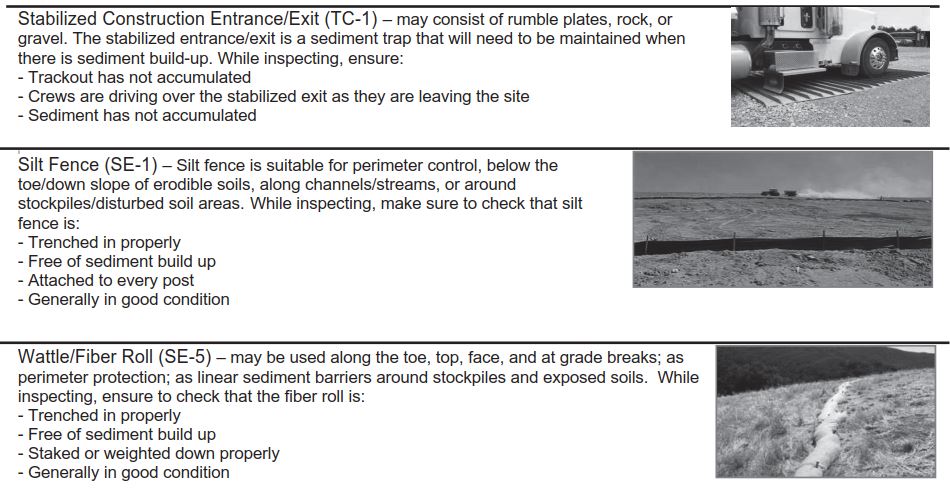Title Page
-
Audit Title
-
Client / Site
-
Conducted on
-
Prepared by
-
Location
Good Housekeeping for Construction Materials
-
Good housekeeping is adequate to prevent construction materials and wastes from <br>becoming airborne.
-
Inventory of products is up to date
-
Stockpiled construction material will be covered and bermed when rain forecast <br>probability is greater than 50 percent and during rain events and as required in the <br>Stockpile Management section of the project specific SWPPP Amendment.
-
All chemicals are stored in water tight containers with appropriate secondary <br>containment.
-
Construction materials are protected from rain as much as possible.
-
Track-out control BMPs are in place and effective (i.e., entrance/exit to project is clean, <br>no accumulation of sediment).
Good Housekeeping for Waste Management
-
Portable toilets are contained to prevent discharge of waste.
-
Washout areas are contained appropriately to prevent discharge or infiltration to soil.
-
Sanitation facilities are clean with no apparent leaks or spills.
-
Waste disposal containers are covered at the end of the day and during rain events.
-
Discharges from waste disposal containers are prevented from entering storm drain <br>inlets or receiving waters.
-
Stockpiled waste material will be covered and bermed when rain forecast probability is <br>greater than 50 percent and during rain events and as required in the Stockpile <br>Management section of the project specific SWPPP Amendment.
-
Procedures are in place to address hazardous and non-hazardous spills.
-
Spill response materials and equipment are available onsite with appropriate disposal <br>containers.
-
Crews are trained in appropriate procedures to address spills.
Good Housekeeping for Vehicle Storage and Maintenance
-
Measures are in place to prevent oil and fuel from leaking into ground, storm drain inlets, <br>or surface waters.
-
All equipment or vehicles are fueled, maintained, and stored in designated areas with <br>appropriate BMPs.
-
Crews are trained to clean vehicle and equipment leaks appropriately, and to dispose of <br>waste properly.
Non-Storm Water Management
-
Non-storm water discharges are properly controlled.
-
Vehicles are washed in a manner to prevent non-storm water discharges to surface <br>waters or drainage systems.
-
Streets are cleaned in a manner to prevent non-storm water discharges to surface <br>waters or drainage systems.
SWPPP
-
The project SWPPP and BMP plans are up to date, available onsite and properly <br>implemented.
Erosion Controls
-
Wind erosion controls are effectively in place to control fugitive dusting and erosion.
-
Inactive disturbed areas (including finished slopes and utility backfill) have effective soil <br>cover.
-
There are no signs of uncontrolled erosion.
Sediment Controls
-
Perimeter controls specified on the WPCD (e.g., silt fence and fiber rolls) are in place <br>and effective at controlling sediment discharges from site.
-
Entrances/exits are stabilized to control erosion and sediment discharges from site.
-
Sediment basins are properly maintained.
Run-on and Runoff Controls
-
Run-on to the site is effectively managed and directed from all disturbed areas.
-
Runoff from the site is effectively managed.
-
BMP Install Info













